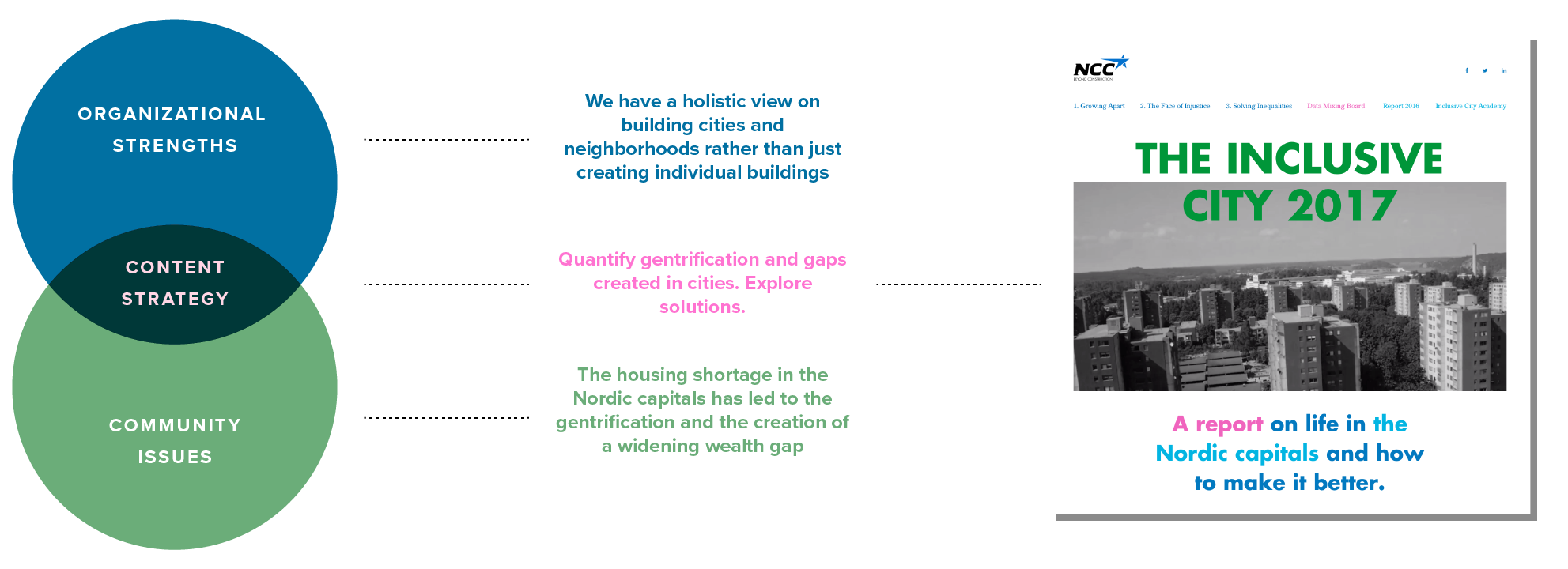
Use data to power your content strategy
Most organisations have identified content marketing as a necessity to interact and engage their audience. We’ve had the privilege of helping several companies set up content marketing platforms and strategies in order to create awareness and drive action. Over time we have seen these sink or swim and come to learn that success often relies on one defining factor. The ability to easily and over time create content in line with the strategy. A lot of organisations, especially SME’s falter here as content creation becomes more time consuming and expensive over time.
Setting good content strategies
Good content usually caters to your audience interests while positioning your organisation at the forefront of your field. To continually create this type of content you need a content strategy that is pointy and broad, while also aligning with your overall vision and organisational goals. To find this we will usually start off by asking two questions:
- What are the organisations strengths and what direction is it taking?
- What recurring ”community” issues are hot topics now and will continue to be so moving forward in the future
It’s simply put; about finding the most valuable interaction point between your organisation and the community you wish to engage. This is where good content is.
For a lot of large organisations catering to a global community, aligning their organisational strengths with the UN sustainability goals has become standard practice. It’s an easy choice for them as it guarantees relevance in a lot of forums while almost certainly aligning with their organisational goals and long term vision. For a former client, a construction company that wanted to attract students and potential future employees the answers looked like this:

So you’ve got a strategy in place and it’s time to execute on it. Usually you would need to generate 2-3 pieces of content per week to maximize on social media algorithms. That’s 104 – 156 pieces of content in a year and if you’ve got a good strategy that should be in place for a couple of years. That’s a lot of content – and this is where most organisations fail. This is why finding a relevant and consistent data stream becomes key – it can at best generate the content for you and at the very least make life a lot easier for your content producers. It should be an integral part of your content strategy.
For companies like Google, Klarna and Hemnet identifying relevant datastreams is easy as they are usually ingrained in their whole business model. But if you are not a digital first, data driven company you need to think differently.
Finding your datastream
Every organisation has a data stream that’s saying something interesting about its customers, employees or the world at large. Finding the right data stream for your content hub is just like defining your content strategy. Identify compelling data within your organisation and pair it with data coming out of your community regarding the issues you wish to engage around. Defining a relevant datastream should be a checkbox when determining whether your content strategy is solid and will last over time.
For Sonos we paired their data on what music their users were playing with biometric data from their audience to generate the world’s first biometric playlists and insights into how music affects people’s lives at home.
For a large auction house in the Nordics we pitched using their data on sold lots to make the world’s first “data driven” interior design blog. For a large hotel chain we are building an automated data platform for their sustainability reporting, tracking their emission levels in real time. Helping and giving advice to employees and visitors on how to keep emissions down.

What the data does for these organisations is condense and distill the stories that are happening within them – that they can then share or create stories around to their audience. Having content built based of data is also an advantage when communicating, since it’s unbiased – giving it higher probability of being picked up by the press.
Stay tuned as we will be launching our data driven content initiative in early 2020
